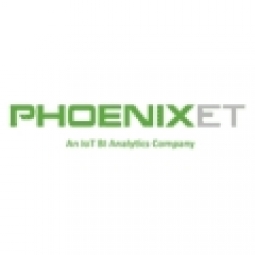
技术
- 功能应用 - 企业资源规划系统 (ERP)
- 传感器 - 触觉传感器
适用行业
- 建筑物
- 公用事业
适用功能
- 设施管理
- 维护
用例
- 楼宇自动化与控制
- 远程控制
服务
- 系统集成
客户
未披露
关于客户
客户是一家全国性的杂货零售商,在全州拥有 20 多家知名品牌的 1,900 多家商店。除了减少能源的业务目标外,客户还公开承诺了一系列能源承诺,以减少他们的碳足迹。
挑战
客户的产品组合包括多个部门,具有许多不同的楼宇管理系统和种类繁多的硬件。这种情况使得集中能源管理变得异常具有挑战性。
尽管涉及的复杂性,客户需要一个能够实现的解决方案:
- 实时可见性 - 在整个企业的设备级别查看制冷、HVAC 和照明的实时性能。
- 节能 - 符合企业 ROI 要求的节能。
- 主动维护 - 针对已确定的能源和建筑效率机会的主动维护流程。
- 数据采集 - 能够通过测量和验证 (M&V) 流程验证节能。
- 集成 - 能够将多个物联网数据点集成到一个集中式平台中。
解决方案
Phoenix 制定了指导方针,并部署了他们的 Enterprise Data Xchange (EDX) 与 Building Intelligence (BI) 报告的集成,涵盖所有客户的位置和部门。 Phoenix 还建立了一个管理流程,以处理通过 Phoenix 的能源控制措施 (ECM) 确定的机会的订单/调度,其中远程修复是不可能的。
总体目标是通过特定的 ECM 策略减少能源消耗。 EDX 平台还使客户能够申请通过公用事业计划提供的数百万美元的能效激励措施。
运营影响
数量效益

Case Study missing?
Start adding your own!
Register with your work email and create a new case study profile for your business.
相关案例.

Case Study
IoT Solutions for Smart City | Internet of Things Case Study
There were several challenges faced: It is challenging to build an appliance that can withstand a wide range of voltage fluctuations from as low at 90v to as high as 320v. Since the device would be installed in remote locations, its resilience was of paramount importance. The device would have to deal with poor network coverage and have the ability to store and re-transmit data if networks were not available, which is often the case in rural India. The device could store up to 30 days of data.

Case Study
Automation of the Oguz-Gabala-Baku water pipeline, Azerbaijan
The Oguz-Gabala-Baku water pipeline project dates back to plans from the 1970’s. Baku’s growth was historically driven by the booming oil industry and required the import of drinking water from outside of the city. Before the construction of the pipeline, some 60 percent of the city’s households received water for only a few hours daily. After completion of the project, 75 percent of the two million Baku residents are now served around the clock with potable water, based on World Health Organization (WHO) standards. The 262-kilometer pipeline requires no pumping station, but uses the altitude differences between the Caucasian mountains and the capital to supply 432,000 m³/d to the Ceyranbatan water reservoir. To the people of Baku, the pipeline is “the most important project not only in 2010, but of the last 20 years.”

Case Study
GPRS Mobile Network for Smart Metering
Around the world, the electricity supply industry is turning to ‘smart’ meters to lower costs, reduce emissions and improve the management of customer supplies. Smart meters collect detailed consumption information and using this feedback consumers can better understand their energy usage which in turn enables them to modify their consumption to save money and help to cut carbon emissions. A smart meter can be defined in many ways, but generally includes an element of two-way communication between the household meter and the utility provider to efficiently collect detailed energy usage data. Some implementations include consumer feedback beyond the energy bill to include online web data, SMS text messages or an information display in consumers’ premises. Providing a cost-effective, reliable communications mechanism is one of the most challenging aspects of a smart meter implementation. In New Zealand, the utilities have embraced smart metering and designed cost effective ways for it to be implemented. The New Zealand government has encouraged such a move to smart metering by ensuring the energy legislation is consistent with the delivery of benefits to the consumer while allowing innovation in this area. On the ground, AMS is a leader in the deployment of smart metering and associated services. Several of New Zealand’s energy retailers were looking for smart metering services for their residential and small business customers which will eventually account for over 500,000 meters when the multi-year national deployment program is concluded. To respond to these requirements, AMS needed to put together a solution that included data communications between each meter and the central data collection point and the solution proposed by Vodafone satisfied that requirement.

Case Study
Energy Saving & Power Monitoring System
Recently a university in Taiwan was experiencing dramatic power usage increases due to its growing number of campus buildings and students. Aiming to analyze their power consumption and increase their power efficiency across 52 buildings, the university wanted to build a power management system utilizing web-based hardware and software. With these goals in mind, they contacted Advantech to help them develop their system and provide them with the means to save energy in the years to come.

Case Study
NB-IoT connected smart meters to improve gas metering in Shenzhen
Shenzhen Gas has a large fleet of existing gas meters, which are installed in a variety of hard to reach locations, such as indoors and underground, meaning that existing communications networks have struggled to maintain connectivity with all meters. The meter success rate is low, data transmissions are so far unstable and power consumption is too high. Against this background, Shenzhen Gas, China Telecom, Huawei, and Goldcard have jointly trialed NB-IoT gas meters to try and solve some of the challenges that the industry faces with today’s smart gas meters.

Case Study
OneWireless Enabled Performance Guarantee Test
Tata Power's power generation equipment OEMs (M/s BHEL) is required to provide all of the instrumentation and measurement devices for conducting performance guarantee and performance evaluation tests. M/s BHEL faced a number of specific challenges in conducting PG tests: employing high-accuracy digital communications for instrumentation, shortening setup and dismantling time, reducing hardware required, making portable instrument setup, avoiding temporary cabling work and the material waste costs



